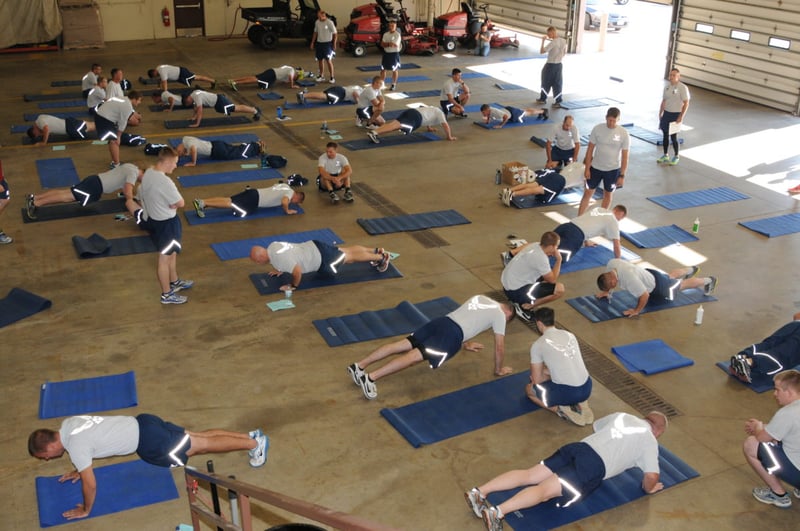
Turner, J.; Wagner, T.; Langhals, B. Biomechanical and Psychological Predictors of Failure in the Air Force Physical Fitness Test. Sports 2022, 10, 54.
“Accurate prediction of Airmen at risk of failing the USAF fitness test can enable early intervention and prevent workplace injury, absenteeism, inability to deploy, and attrition.”
Population: 223 active-duty US Airmen who participated in a comprehensive mental and social health survey, body composition assessment, and physical performance battery
The questions covered:
The authors of this study evaluated whether it was possible to use a combination of demographic, biomechanical, and psychosocial factors to predict whether active-duty members of the U.S. Air Force would fail the Air Force Physical Fitness Test (APFT). To do so, they used data collected from a series of questionnaires covering physical and mental health, a Functional Movement Screen, and a body composition assessment. The resulting dataset was analyzed using traditional statistical and more advanced machine learning models to attempt to predict APFT result status.
Descriptive analysis of the data demonstrated a correlation between body composition and APFT, such that active-duty airmen with higher muscle percentages (> 30%) and lower body fat percentages (< 20%) were more likely to pass the test. Statistical analysis using traditional logistic regression models performed relatively well and identified the following variables as predictive of APFT result status: sleep, body mass index, self-reported fitness satisfaction, and recent injury resulting in physical restriction. Conducting a similar predictive analysis using neural network models resulted in improved prediction accuracy and precision, both when using the full 21-feature dataset and when using a reduced dataset consisting of the four variables selected during logistic regression analysis.
The results of this study indicate that it is possible to predict the outcome of physical fitness tests in active-duty servicemen to a high degree of accuracy using a variety of statistical methods. Advanced machine learning approaches provided higher predictive power than more traditional models, while the inclusion of logistic regression approaches allowed researchers to identify a small number of features of particular relevance to APFT outcomes.
Physical fitness is a pillar of U.S. Air Force (USAF) readiness and ensures that Airmen can fulfill their assigned mission and be fit to deploy in any environment. The USAF assesses the fitness of service members on a periodic basis, and discharge can result from failed assessments. In this study, a 21-feature dataset was analyzed related to 223 active-duty Airmen who participated in a comprehensive mental and social health survey, body composition assessment, and physical performance battery. Graphical analysis revealed pass/fail trends related to body composition and obesity. Logistic regression and limited-capacity neural network algorithms were then applied to predict fitness test performance using these biomechanical and psychological variables. The logistic regression model achieved a high level of significance (p < 0.01) with an accuracy of 0.84 and AUC of 0.89 on the holdout dataset. This model yielded important inferences that Airmen with poor sleep quality, recent history of an injury, higher BMI, and low fitness satisfaction tend to be at greater risk for fitness test failure. The neural network model demonstrated the best performance with 0.93 accuracy and 0.97 AUC on the holdout dataset. This study is the first application of psychological features and neural networks to predict fitness test performance and obtained higher predictive accuracy than prior work. Accurate prediction of Airmen at risk of failing the USAF fitness test can enable early intervention and prevent workplace injury, absenteeism, inability to deploy, and attrition.